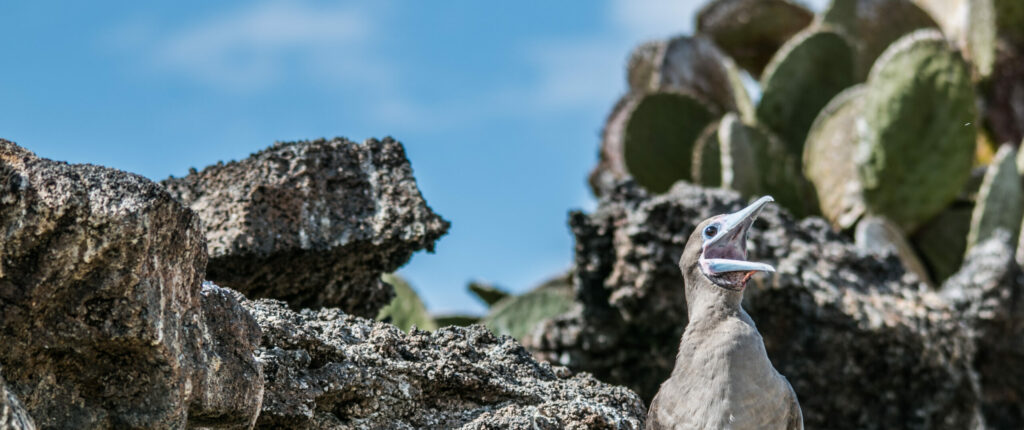
Island overview
Genovesa is situated towards the north east of the Archipelago, and was named after the Italian city of Genoa, in honour of Christopher Columbus.
The island is home to a saltwater lake, a sandy bay and sheer cliff faces that rise out of the sea. Approximately two million years old, the island has an unusual shape due to its volcanic history. The crater is circular, over 600 metres wide at the rim and 60 metres deep, with a lake 350 metres across on its floor.
Visitors to the island will anchor in the horseshoe-shaped Darwin Bay, the anchorage point for tourist vessels and a popular spot with marine life visiting the island, as it provides shelter from the open sea. Frequently spotted species include turtles, fur seals and jellyfish, and you might even be lucky enough to see hammerhead sharks, Galapagos sharks and manta rays.
A staircase known as the Prince Phillips steps is cut into the cliff face on the east of the bay, leading to a large sea bird colony on the rocky, unprotected flat top of the island. Many species of bird live and breed on Genovesa in large numbers. The most common are frigatebirds, storm petrels, swallow-tailed gulls, noddy terns, mockingbirds, lava gulls, tropicbirds, Galapagos doves and Darwin’s finches, particularly the large cactus finch.

The vegetation on Genovesa island is sparse; scrub, mangroves and bushes make up most of the flora. This arid zone vegetation is the perfect nesting place for red-footed boobies, which are the only members of the gannet and booby family to nest in trees more than a metre above the ground. The highest concentration of red-footed boobies in Galapagos is found on Genovesa island.
Red-footed boobies and great frigatebirds like to perch in the fragrant branches of the Palo Santo trees along the pathway. The Galapagos short-eared owl is also a resident of Genovesa and can often be spotted amongst the bushes and the shrubs at dawn and dusk as it hunts close to its burrow. Galapagos short-eared owls have developed a unique hunting technique on Genovesa. Storm petrels nest deep in tunnels in the lava rock, and the owls have learnt to stalk nearby, watching the petrels as they enter and leave the tunnels. The owls have learned to hide in the entrance of the tunnel, and grab petrels with their talons as they fly in or out of their tunnels!
Wildlife highlights


Magnificent frigatebird

Galapagos short-eared owl


